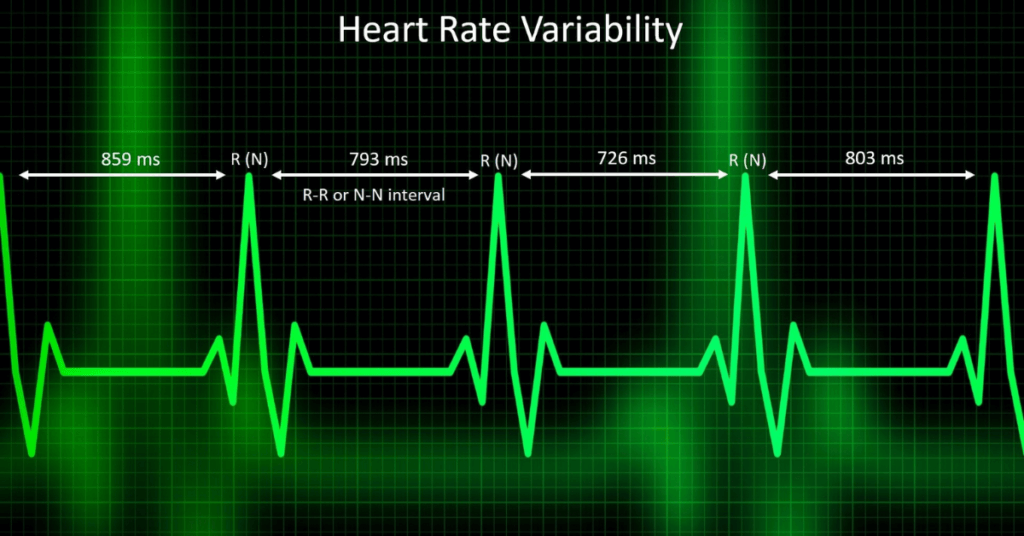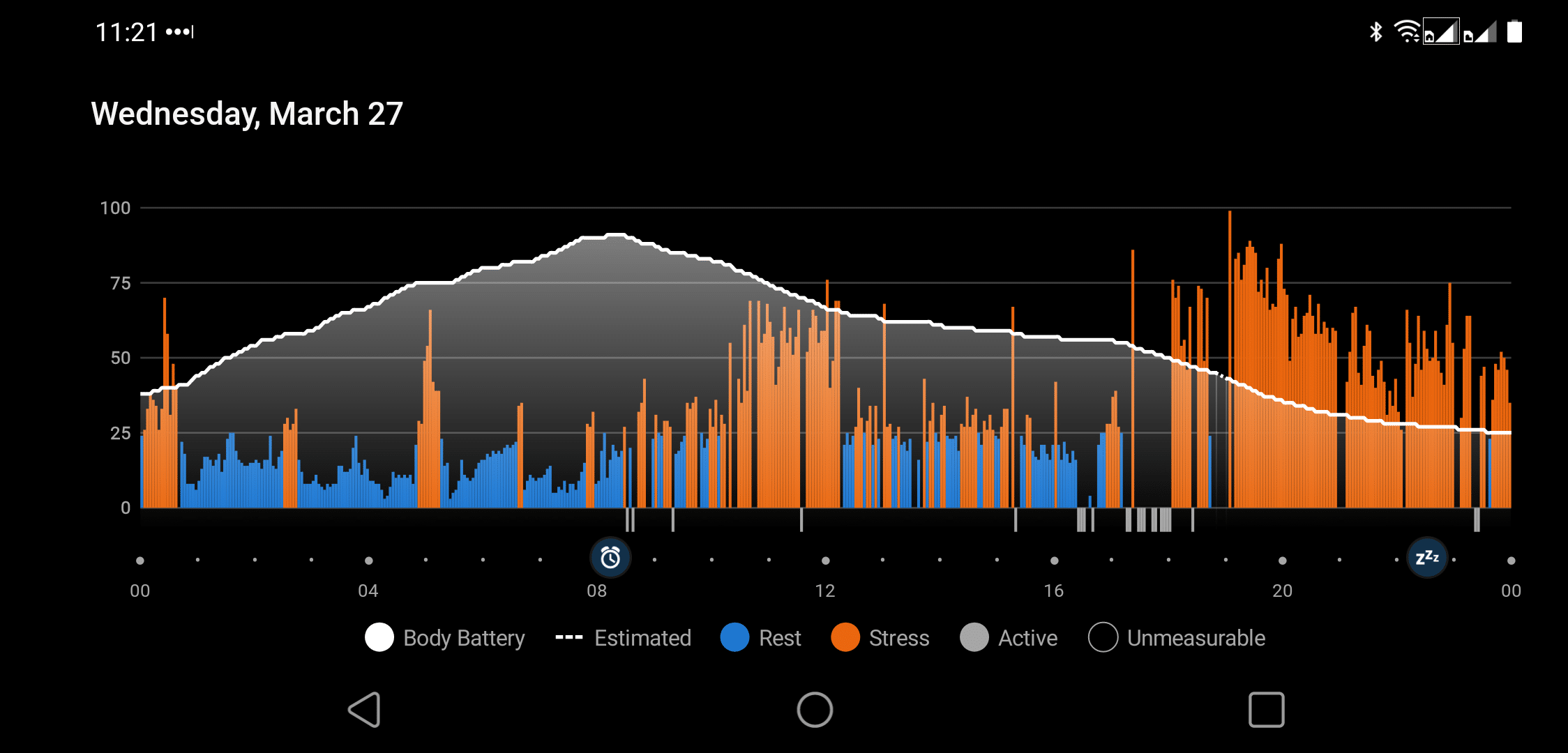In today’s world, keeping a close eye on our stress levels through technology like Garmin devices has become increasingly important for managing our health and wellness. Understanding what readings signify about our stress states can empower us to make healthier lifestyle choices, directly addressing the quest for balance.
What Is a Normal Stress Level on Garmin Devices?
A normal stress level on Garmin devices typically ranges between 0-25, indicating low stress. This zone suggests a state of calm and relaxation. Readings above this range progressively indicate higher stress levels, with measures beyond 50 reflecting medium to high stress states requiring attention.
Garmin Stress Levels Explained
- Heart Rate Variability (HRV): The key metric Garmin assesses stress.
- 0-25: Indicates a low stress level, representing calmness.
- 26-50: Falls into the mild stress category, manageable daily stressors.
- 51-75: Shows medium stress, signaling noticeable but controllable stress levels.
- 76-100: Marks high stress, necessitating immediate stress management actions.
- Daily tracking: For identifying patterns and potential stress triggers in your routine.
- Stress level fluctuations: Normal throughout the day based on activities and interactions.
Decoding Garmin Stress Levels
Garmin’s stress level feature tosses you a lifebuoy in the ocean of daily turmoil. The stress level range between 0 and 100 isn’t just random numbers; they’re your stress indicators. Picture a day when everything goes right, and you’re as relaxed as a cat in a sunbeam—that’s you in the resting state, with scores closer to zero.
Disclosure: Some of the links in this article may be affiliate links, which can compensate me at no cost if you decide to purchase. This will help grow this site and help more people. Thank you for making a difference!
As you encounter minor annoyances, like a forgotten umbrella on a rainy day, your score might creep into the low stress zone, inching toward 50. Here’s where it gets interesting. Cross the halfway mark, and you’re in medium-stress territory, akin to realizing you’ve left your phone at home.
| Stress Level Range | State | Description |
|---|---|---|
| 0-25 | Low Stress | Calm and relaxed, akin to resting. |
| 26-50 | Mild Stress | Minor annoyances, manageable stressors. |
| 51-75 | Medium Stress | Noticeable stress, requires attention. |
| 76-100 | High Stress | Significant stress, action needed. |
Nudging up to the 76-100 range, we hit high stress, the equivalent of discovering your phone was in your pocket after tearing the house apart. Garmin employs the stress level chart and tracking to provide these insights, offering a visual storyboard of your day’s emotional highs and lows.
The Significance of Heart Rate Variability
Heart rate variability (HRV) is the secret sauce in Garmin’s stress-tracking recipe. It’s not witchcraft but rather a sophisticated way to gauge how stress affects your body. HRV measures the time between each heartbeat, and a more variable interval suggests a relaxed state. So, if your heart marches to the beat of a calm drummer, your stress score stays low. Conversely, a steady, metronomic beat could indicate stress levels are climbing.

This is where Garmin’s stress tracking shines, offering a peek into your body’s stress response and recovery. By monitoring shifts in HRV, your device gauges your body’s reaction to stress and how effectively you’re bouncing back, akin to measuring how quickly you recover after accidentally sending an awkward text to the wrong person.
Optimizing Stress Management with Garmin
Garmin arms you with an all-day stress-tracking tool akin to having a personal stress coach tethered to your wrist. Continuous monitoring and stress level chart interpretation make you clued into patterns that might slip past undetected. Have you noticed a spike in stress levels above 25 during your morning commute?
Perhaps it’s time to switch up your playlist or find a scenic route. The device’s insightful stress chart with its telling orange bars becomes a map to navigate through your day more mindfully.
The true magic happens when this real-time data education prompts behavioral change—turning stress management from a reactive to a proactive pursuit. It’s like learning to dodge raindrops; you might get wet occasionally but find joy in the dance.
Addressing Garmin Stress Accuracy
The pondering over Garmin’s stress-tracking accuracy is as inevitable as a rain cloud at a picnic. Sure, sometimes the device might miss the mark, attributing a high stress level to a thrilling movie rather than an actual life crisis. Yet, it’s crucial to recognize the technology’s intent: to serve as a guide, not a gospel.
The stress score, augmented by heart rate variability and other biometric feedback, offers a comprehensive yet not infallible overview of your stress landscape. Balancing Garmin’s data with personal insight crafts a fuller picture, blending technology with intuition. It invites a dialogue with your experiences, encouraging a hands-on approach to stress management rather than a passive glance at numbers.
Essentially, it’s about using the device not as a crystal ball but as a compass, guiding you through the ebb and flow of daily stress with informed awareness.
Personal Thoughts
Utilizing devices like Garmin to monitor stress levels has been enlightening in my journey. It enabled me to feel and see the impact of various stress management techniques, further validating the scientific approach I deeply value.
This tool has offered tangible evidence of my stress levels and guided me toward more effective stress management practices. While it’s not a magic solution, it’s a valuable part of a holistic approach to understanding and mitigating stress in daily life.
Frequently Asked Questions
How does Garmin measure stress levels?
Garmin measures stress levels using heart rate variability (HRV), which reflects the time variation between each heartbeat. By analyzing HRV, Garmin devices can estimate your stress level, categorizing it into low, medium, or high based on fluctuations in your heart rate patterns.
What does a high stress score on my Garmin indicate?
A high stress score on a Garmin device, typically 76-100, suggests you are experiencing a high stress level. This might prompt you to take steps to relax or address the source of stress, as prolonged high stress can impact overall health and mental well-being.
How can I lower my Garmin stress level?
As indicated by a Garmin device, relaxing techniques such as deep breathing, meditation, or physical activity can effectively lower stress levels. Regularly monitoring your stress level can also help you proactively identify and manage stressors, leading to improved stress management.
Is it normal for stress levels to fluctuate throughout the day?
Yes, it’s completely normal for stress levels to fluctuate throughout the day, as measured by a Garmin device. Various factors, including physical activity, mental state, and external stressors, can cause these variations. Observing the pattern of fluctuations can help you better understand and manage your stress.



